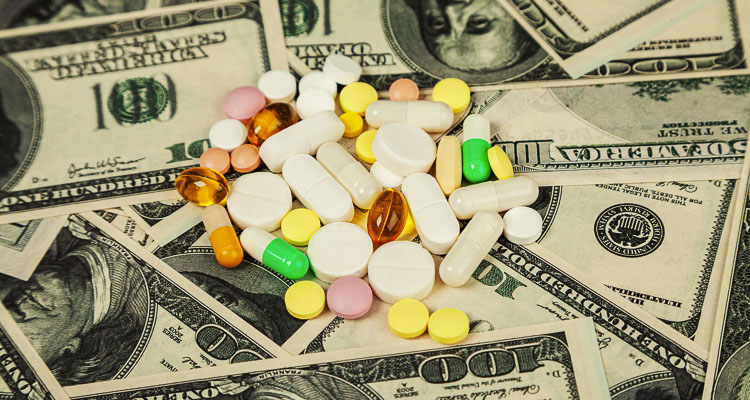
Roger Stark of the Washington Policy Center examines the reality and trend
Roger Stark
Washington Policy Center
The political left continues to claim that prescription drug prices are too high. Although the Democrats lost the battle over the “Build Back Better” proposed legislation, the Biden Administration is pushing for some type of price control on prescription drugs. The Washington State Legislature created a drug-pricing committee this last session. (here) Ostensibly, this committee will only deal with high-priced orphan-specialty drugs, but clearly this opens the door to price controls on other brand-name and generic drugs.

The Trump Administration claimed and others on the political right now claim that prescription drug prices are actually decreasing. What is the reality?
As we have pointed out before, the entire scheme of drug pricing is very complex and can be viewed from several different perspectives. (here)
Let’s start with the consumer price index or CPI. The U.S. Bureau of Labor Statistics began tracking the CPI for prescription drugs in 1935. The price of the tracked-drugs showed an average increase inflation rate of 3.34 percent between 1935 and 2022. This is high, however, the overall average increase in inflation for the same time period was 3.54 percent. (here) In other words, based on the CPI, drug prices have increased at a lower rate than overall inflation.
Over the past few years, the CPI for prescription drugs has actually shown a decrease in prices. (here) However, the CPI only tracks a small sampling of prescription drugs (20 of the most recently purchased at any given retail pharmacy) and does not include drugs dispensed at other facilities or high priced drugs. So while technically accurate, the CPI captures only a small number of prescribed drugs.
Another issue is the role of middle-men in the purchase of drugs. Pharmacy benefit management companies (PBMs) often determine the final price that patients pay for drugs. They set prices, offer rebates, and play a big role in getting drugs on hospital and insurance formularies.
For example, Express Scripts is a PBM and published a report in 2018 on drug pricing for the 2017 year. (here) The company found that spending on common prescription drugs went down by 5.8 percent, however, spending on specialty drugs went up by 9.4 percent. And the critical issue was that the specialty drugs accounted for 45 percent of overall drug spending.
There are multiple other reports on escalating drug prices. (here) At the same time, there are reports of decreasing drug prices. (here) When looking at these reports, however, the reader should be aware that the sampling sizes are inconsistent and the specific drugs included in the studies vary widely.
Regardless of where drugs are priced, the real problem for patients is their out-of-pocket expenses, which have been rising. This is financially the biggest impact on people’s experience in purchasing pharmaceuticals. Again, it’s very complicated depending on the patient’s insurance, their deductible, and where they make their purchase.
Manufacturing pharmaceuticals is very different than manufacturing other products. The cost of drugs reflects the research and development that results in the final product. The actual cost of manufacturing the drug is quite small – sometimes only pennies. There is R&D associated with building other products, cars and airplanes for example, but there is also a huge fixed cost in the materials that make that product.
One of the arguments for price control on drugs is that Americans do pay more for their drugs than people in other countries. However, this directly supports the R&D of new pharmaceuticals. Once the R&D is done, drug companies are willing to sell that drug to other countries at a discount price to recoup any amount of the R&D expense. Boeing and Ford can’t deeply discount their products, simply because of the large fixed manufacturing costs.
The critical issue is that patients in many, if not most other countries, don’t have the wide variety of drugs that are available to Americans.
The price trend of pharmaceuticals is complex and can be examined in many different ways. If elected officials truly want to help patients, and not simply penalize drug companies, they should focus on bringing down out-of-pocket expenses, not putting price controls on drugs. Price controls on drug manufacturing would seriously decrease the development of new life-saving and life-prolonging pharmaceuticals.
Roger Stark is a senior fellow and director of the Center for Health Care at the Washington Policy Center.




